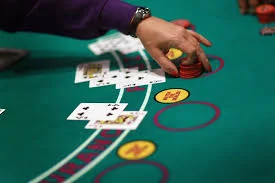Flipping a Coin is Not 50:50
Persi Diaconis is a person somewhere on the boundary of academic mathematics and stage magic and has become infamous in both fields. There is a bit of a dichotomy here because the ethos in maths and science is to publish everything: it is almost immoral not to, the whole system works on peer review. However the world of magic innovation is famously secretive and a magician’s income is directly related to how much they can keep things under their chest. Diaconis, who generally specialises in card tricks, has straddled the line where he publishes the papers which have insights into probability and pattern, but keeps most of his other work to himself. You may have heard that seven riffle shuffles are sufficient for a normal pack of cards? That was one of Diaconis’ many results in shuffling theory, which conclude that a “wash” where you spread the whole pack out on the table and just randomly swirl them around for 5 seconds is by far the best way, but the papers were fascinating and those were where you may have come across him before.
Persi Diaconis
Yesterday I was looking into whether the probability of having a girl or boy at birth or the probability of getting a particular result on a flipped coin was closer to 50%. I expected the answer to be something which was easy to look up; a simple number which was dependant on which type of coin you were using. In my research I came across this brilliant paper by Persi Diaconis.
He breaks the coin flip into a few different categories and we'll start with the fairest, which is to flip the coin into the air and catch it in your hand. There is potential here for manipulating the coin by either upturning it onto your forearm or not, but let's assume you just catch it naturally. If you always start with heads face up and give the coin some sort force which varies randomly (so that it isn't exactly the same throw every time which robots can do very well) then it will land on a heads with a probability closer 51%. Two points to raise here before I justify that figure. Firstly we can't add any more significant figures here because the number of trials to get the next decimal digit at a significantly significant level are about 250,000 flips. We have over 250 maths students in the department which gives me an idea… Secondly if you are worrying about coins landing on their side, Diaconis’ research placed it at about 1/4000 for a US 1 cent coin, which may be larger for a thicker coin like the £1 coin, but it isn't large enough to worry about.
Ok, here is the justification. If we write out a list of coin results starting with the face up heads we get something like HTHTHTHTH. To get our result we stop somewhere along the chain with stopping at any of the results near the start being more likely. It is more likely to have 3 spins rather than 20 for example. Because there is an extra heads at the beginning, heads is the more likely result. The paper justifies this with both large scale data and the probabilistic physics theory.
The paper also investigated spinning a coin as a way of deciding heads or tails. So a coin is placed on a table and given quite a lot of force to spin like a top. Again there is a chance of it staying on its edge, so this is more recommended with a thin coin. This is where the specifics of the coin come into play, so Diaconis’ result is for the US penny but that is similar to many of our thinner coins. Because the heads on most coins are heavier, tails came up close to 80% of the time! Some of his volunteers reported coins that went close to 90%, but it seemed like the build up of grime on both sides was helpful for slightly balancing out the coin making older coins more fair. This bias in coins has very little effect on coins which are flipped, but a spin gives enough time for the imbalance of the coin to make a big effect. I'm surprised at just how far you can get from 50% with this.
As a bit of a hybrid between these two methods of coin tossing we have flipping it up into the air but letting it drop to the table rather than catching it. Most of the time this is the same as catching it in your hand, but occasionally it will land and start spinning before finally settling on a side. This lets the spin bias come into play and so tips it in the favour of tails. It is interesting to note that catching it in your hand is actually fairer even if it does open the coin up for manipulation.
To attempt to answer my original question: it depends on how you flip it as to how fair a coin is, but to make it as fair as possible it should do a lot of turns in the air and you should catch it in your hand. With this you can get as close as possible to 50%. In comparison the number of males born for every 50 females in the UK is 51.9. Most countries have similar rates although it does seem to be dependant on the age of the parents (which will be higher in MEDCs) and, interestingly, ethnicity. Some countries (mostly China) completely screw up this data by aborting female fetuses before they are born which screws up the figures. Historically men tended to kill each other off through fighting leaving vaguely equal numbers in each gender meaning that it made evolutionary sense to have slightly more males at birth. I've ignored the statistics of those born in all the different varieties of intersex here, just as with coins that land on their sides.







